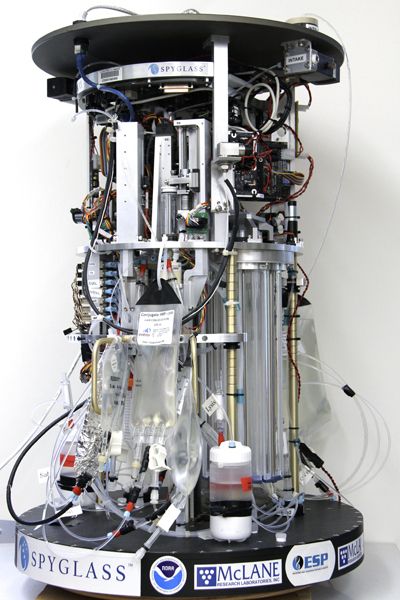
Ocean-Going Robot Hunts for Toxic Algae

Toxic algae and bacteria can really throw a pall over a seafood dinner. To identify algal or bacterial toxins before contaminated fish make it to stores, researchers in California have built a robot sensor that can sniff the blooms out before it's too late.
The so-called Environmental Sample Processor, which looks like a souped-up science fair project, carries instruments that can suck up microbes in water and analyze their DNA and RNA. The machine is being used to identify the kind and amount of toxic species in Washington's Puget Sound.
Detecting toxins before they become a full-fledged bloom could save millions of dollars a year by preventing costly recalls of contaminated seafood, scientists say. If the robot is successful, the scientists, based at the Monterey Bay Aquarium Research Institute, Calif., and Stanford University, will develop a fleet of them to serve as a warning system for fisherman about when to avoid casting their nets.
Follow Tanya Lewis on Twitter and Google+. Follow us @livescience, Facebook & Google+. Original article on LiveScience.
Sign up for the Live Science daily newsletter now
Get the world’s most fascinating discoveries delivered straight to your inbox.













